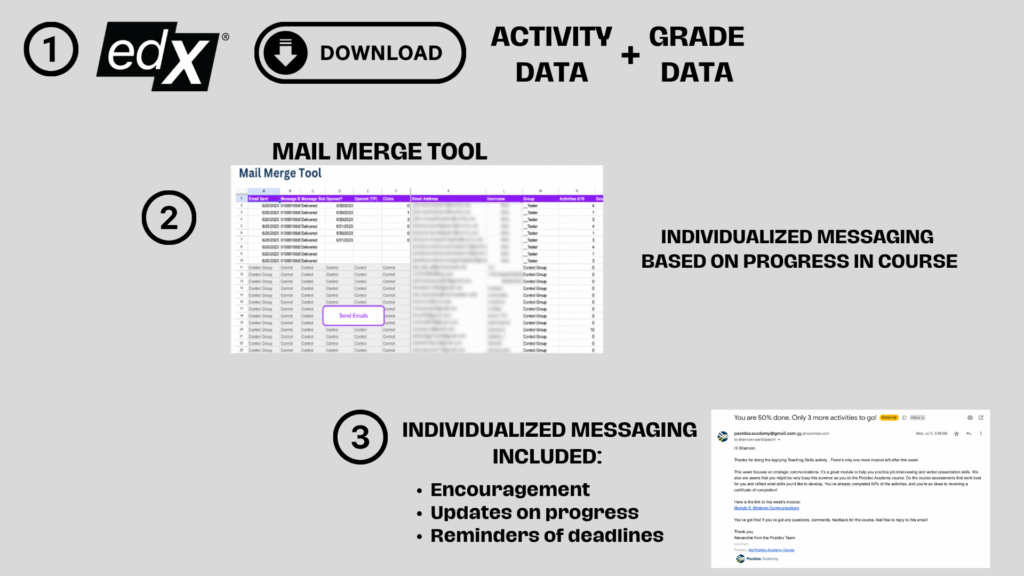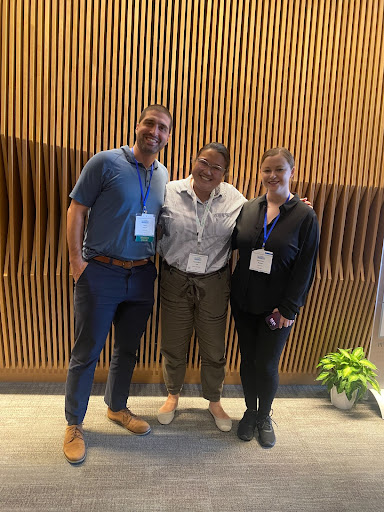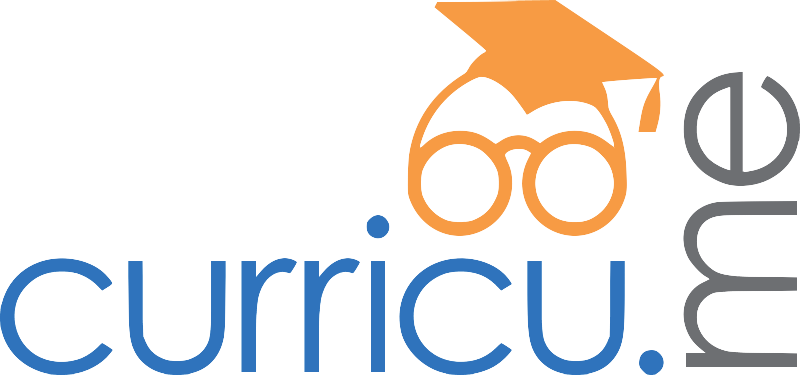Our team recently had the opportunity to attend the LWMOOCs conference at MIT in Boston to present findings from an action research project that we collaborated on with our clients from The Postdoc Academy.
This project started with a request from a client to be able to provide more personalized communications to learners in their MOOC which tends to have 1000-1500 registered students for each course run.
We wanted to find a way that we could automate some of the process and decided, as a team of academics, that it would only make sense to come up with a research plan to see if our personalized emails had any impact.

We will share more about our research once we complete our data analysis, but for now here is a quick summary of our experience using personalized nudge emails.
Why are personalized emails needed?
Digital education students are often bombarded with information and generic communications, so institutions and course teams are constantly seeking innovative ways to enhance student engagement, activity, and course completion rates. We decided to explore the use of highly customized emails as a means to encourage learners to engage with the course.
Hyper-personalized nudge emails move away from the generic, weekly messaging that is often used in large online courses. The hyper-personalized nudge emails that we created for this project leveraged course progression and assessment analytics to create personalized content tailored to each student’s unique needs and progress within the course.
How can hyper-personalized nudge emails impact participation?
- Increased Engagement: Hyper-personalized nudge emails have the potential to boost student engagement. By analyzing individual data such as past participation, assignment submissions, and course interactions, course teams can tailor messages to rekindle student interest and motivation. A message reminding a student of their previous active involvement, combined with personalized suggestions or feedback, can inspire continued participation.
- Timely Reminders: Nudge emails serve as timely reminders for upcoming deadlines, events, or critical activities. The personalized emails remind learners of their individual progress to help keep them on track.
- Personalized Content: With the ability to customize content, these emails can include course materials, resources, or links relevant to a student’s specific needs. For example, if a student is struggling with a particular topic, the email may include additional resources and study tips.
How do these emails work to encourage students?
- Targeted Interventions: Hyper-personalized nudge emails allow for more targeted interventions. Using the data pulled from the course, we can identify if a learner is lagging behind and send them a targeted message offering assistance, suggesting additional resources, or even connecting the student with a tutor.
- Encouragement and Recognition: Students respond positively to recognition and encouragement. Nudge emails can recognize their achievements, no matter how small, and provide positive reinforcement to motivate them to remain active and focused.
By keeping students engaged and active in the course, hyper-personalized nudge emails can contribute to higher course retention rates. When students feel supported and motivated, they may be more likely to stay enrolled and complete the course.
As technology continues to evolve, we may find new ways to further automate these processes and provide personalized learning plans and feedback to students.

Thank you to our partners at The Postdoc Academy for collaborating on this project. This is a photo of our team at the LWMOOCs 2023 conference. You can view the academic poster that we presented here.
If you are interested in taking either of The Postdoc Academy courses you can sign up for them on edx.org:
The Postdoc Academy: Succeeding as a Postdoc
The Postdoc Academy: Building Skills for a Successful Career
Do you currently have a tool or process that helps to personalize communications? If so, leave a comment below. We’d love to hear more about your experiences.

